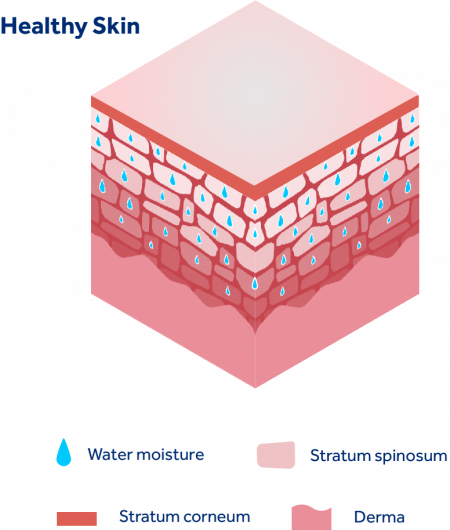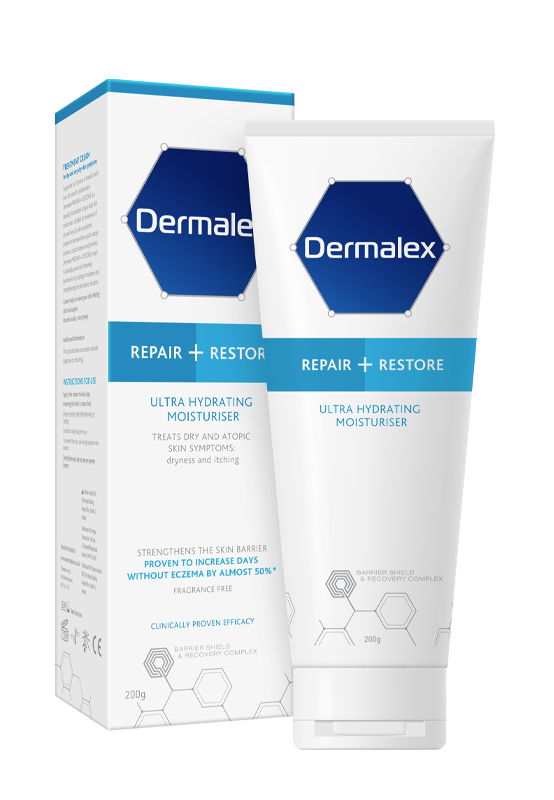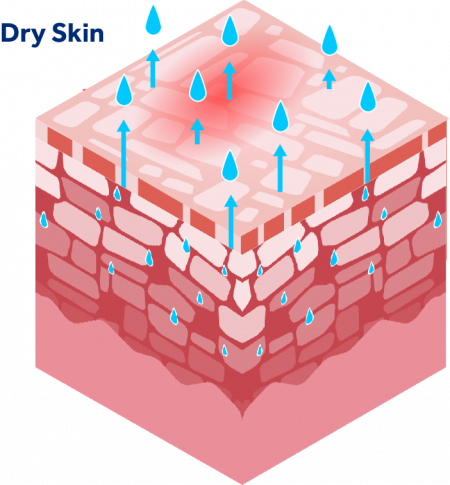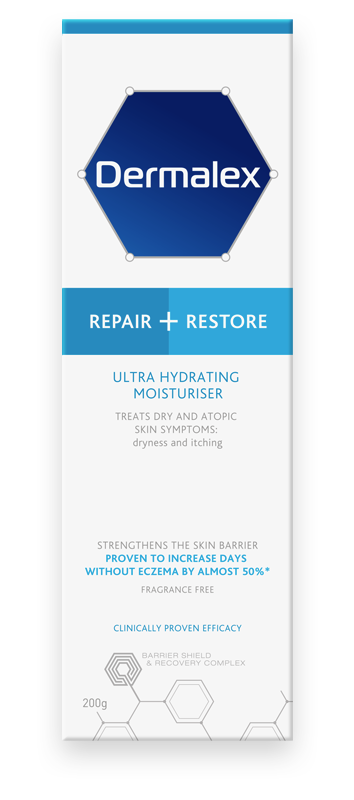
Dry Skin
Dry skin can occur for a number of reasons and can be very uncomfortable. It affects millions of us in different ways, but is most commonly characterised by cracking, itching and scaling1. Here’s the good news: there’s plenty that can be done to ease symptoms and feel more comfortable day to day. Let’s take a look at treatment, causes, risk factors and more.
What is dry skin?
What is dry skin?
Dry skin can occur anywhere on the body, but usually affects hands, face, arms and legs. It has certain triggers and causes, including harsh soaps, but often occurs naturally. Even if your skin is naturally oily, you may develop dry skin from time to time.
The condition is sometimes only temporary, for example only occurring in winter, but is lifelong for some individuals.
What are the symptoms?
Symptoms depend on factors such as age, where you live, health and vary person to person. But, the most common include:
- Skin tightness (especially after showering)
- Itching
- Flaking, scaling or peeling (with different levels of severity)
- Redness
- Grey or ashy skin
- Deep cracks
- Bleeding
- Fine lines or cracks
- Skin that feels and looks rough2

Causes & treatment
-
Your skin’s natural barrier
One of the most important functions of the outermost part of your skin is the formation of your skin barrier. This helps to prevent irritants, microorganisms and allergens from entering the body. Your skin’s barrier also controls water loss and helps to keep your skin soft and supple.
Your skin barrier regulates the water content in your skin and protects you against the world around you. It’s mainly made up of stratum corneum, which is the outermost part of the epidermis.
Stratum corneum, just like a normal brick and mortar wall has two parts. The ‘bricks’ are flattened dead skin cells called corneocytes. The ‘mortar’ is made up of lipids (or natural oils). Your corneocytes consist of natural moisturising factors such as urea and lactic acid, which help to attract water to the cells. Lipids hold these cells in place and help to fill in the gaps. Working as one, this protective ‘wall’ helps to keep moisture in and micro-organisms and allergens out3.
-
What happens when the natural barrier becomes weakened?
When the skin’s natural barrier is weakened or damaged, your body struggles to maintain the right balance of moisture, which can cause dry skin.
Dry skin may have a flaky appearance, with red irritated areas, as well as dry white patches. It may feel rough and uneven to the touch and typically create a feeling of tightness and itching, which may also develop into painful cracks.
A weakened skin barrier may result in a further increase in water loss, resulting in a more pronounced dryness, as well as increased vulnerability. Dry skin may additionally cause an itching sensation, which may produce an urge to scratch. Repeated itching and scratching of dry skin can lead to skin damage, increasing the risk of secondary inflammation in the skin, infections, and even eczema.
-
What causes dry skin?
There’s no one underlying cause that applies to everyone with dry skin; there are many different ones. But, here are some of the most common9:
Soaps
Certain soaps and shampoos remove moisture from the skin, as they’re designed to remove oils – so pick carefully. Try to avoid harsh detergents (and even fabric softeners), opting for gentle ones instead.
Hard water
Hard water (tap water containing a high concentration of minerals and heavy metals) can leave a film on the skin that causes dryness, preventing moisturisers from being absorbed and aggravating conditions like acne or rosacea.
Fragrance
Fragrances can irritate or worsen dry skin, whether in deodorants, skin-care products or soaps. This is because fragrance is a common cause of allergic contact dermatitis, so try to go ‘fragrance-free’ as much as possible. Always check and read the labels carefully.
Dry air
Dry air, inside or out, can be punishing on your skin. The lower the humidity levels, the drier and itchier your skin may feel.
Over-washing
Too much washing (e.g. on the hands) can lead to dry, cracked skin, particularly with overly hot water.
Medication
Certain medications, for example those used to treat acne, may dry out the skin.
-
Risk factors
There are also a number of risk factors that can make you more likely of developing dry skin, such as:
- Genetics (if your parents/ a family member has dry skin, you may inherit the condition)
- Long, hot showers or baths
- Ageing (adults aged 40+ have an increased risk of experiencing dry skin)
- Weather (you’re more likely to develop dry skin during autumn or winter, when humidity levels are lower)
- Occupation – healthcare professionals, hair stylists and beauticians are often at a greater risk, as they wash their hands more frequently
- Swimming in chlorinated pools
- Living in dry, cold or low-humidity climates
- Type 2 diabetes
- Stress
- Underlying medical conditions e.g. an underactive thyroid
-
How to prevent dry skin
There are many things you can do to ease, prevent and improve symptoms.
Change your habits
Lifestyle changes can help, including :
- Using gentler soaps
- Washing in lukewarm water (long, hot showers dry out the moisture in your skin)
- Using a humidifier to restore moisture to the air in your house
- Moisturising regularly, including after bathing
- Avoiding alcohol-based soaps
- Blotting your skin dry rather than rubbing it
- Reduce the frequency of using certain medications (if possible)
- Using skincare products that contain vitamin A or C (they counteract the coating caused by hard water)
- Drinking plenty of water
- Wearing rubber gloves
- Covering up, especially during winter months
- Managing stress levels
- Choosing fabrics that allow your skin to breathe e.g. cotton and silk
-
How to cure dry skin
There’s not necessarily a ‘cure’ for dry skin, however there are options that you can try which can help relieve the symptoms or irritation. One of the most important steps you can take in treating dry and atopic skin is to hydrate it, therefore improving its barrier function.
-
Why Dermalex?
We get it – and we can help.
Dermalex Repair + Restore is clinically proven to intensively hydrate skin by locking in moisture and treating dry skin symptoms such as dryness and itching. The cream leaves your skin soft and supple and also strengthens the skin barrier function with 84% of users seeing immediate results11.
Read more
How can Dermalex help
Your skin is the body’s largest organ and your first line of defence against the world outside. While this natural barrier is highly effective, it is sensitive, and subtle day-to-day changes in temperature or humidity can make your skin feel drier than normal. Dermalex can help to keep your skin soft and supple.
The Dermalex range of creams has been specially formulated to moisturise and protect your skin and keep your natural barrier strong and healthy. Each product in the range has been developed with a thorough understanding of the factors that lead to common skin conditions and clinically-proven to treat and relieve the symptoms that make problem skin so uncomfortable.










